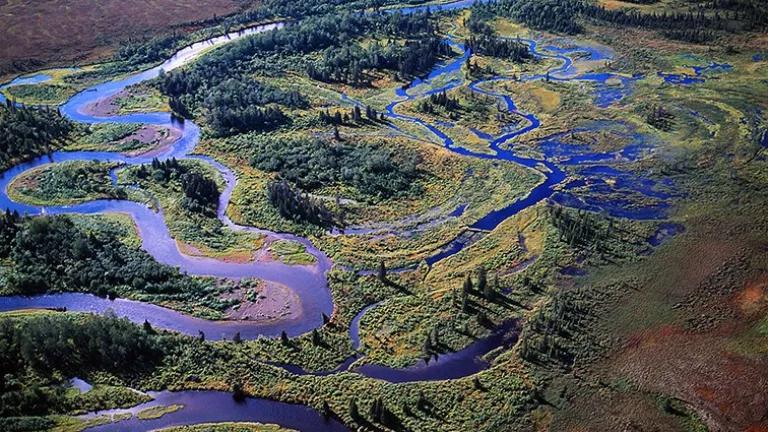The Bureau of Land Management (BLM) recently released a Final Environmental Impact Statement (FEIS) for oil and gas driling in the Western Arctic Reserve, formally known as the National Petroleum Reserve-Alaska. "National Petroleum Reserve" sounds like a made-to-order energy sacrifice zone, but my colleague Chuck Clusen explains that, in the legislation that set this public land aside, Congress explicitly recognized the many natural values present in the Reserve that must be protected, including recreational, fish, wildlife, historical, and scenic values. Indeed, this land provides some of the wildest, most insanely beautiful and sacred wildlife habitat on earth for wolves, caribou, grizzly and polar bears, shorebirds, waterfowl and seabirds.
But there is something else about the Western Arctic Reserve that makes it important to protect: many Americans live in nearby communities and depend on it for their subsistence, including food, water, clothing and other personal needs, and their safety and quality of life.
In its analysis of the Western Arctic Reserve, BLM did the right thing when it worked in partnership with local communities, tribal interests, health experts, and the EPA to consider the potential health impacts of new oil and gas development plans on nearby populations, as well as mitigation options. There is growing evidence and analysis of the dangerous risks that oil and gas operations pose to human health.
NRDC has been saying for years (here is a blog post from 2008) that the BLM needs to conduct the same type of process in the lower 48. We know that oil and gas production can lead to toxic air pollution, drinking water contamination, destruction of wildlife habitat, and other health impacts including increased traffic accidents, diseases, pressure on health care services, and more.
Sadly, the BLM has not done this in the lower 48. It is instead ignoring local governments who have asked for the same thing as Alaskans. The BLM did not include a health impact assessment in the Draft Environmental Impact Statement for the Colorado River Valley area, even though six local governments with official cooperating agency status requested that the BLM do just that. The BLM never even directly responded to their requests. The public therefore does not have the information needed to fully understand the costs and benefits of different alternatives.
The EIS process is governed by the National Environmental Policy Act. Under the regulations for this Act, agencies are directed to consider “the degree to which the proposed action affects public health or safety” and to “Use all practicable means.....[to] avoid or minimize any possible adverse effects of their actions upon the quality of the human environment.”
The BLM has worked toward fulfilling these requirements by considering health impacts of new oil and gas development in Alaska, but not in the lower 48, where new development of federal oil and gas reserves is often near where many people live, or the sources of their drinking water.
The BLM should be incorporating health impact assessments into NEPA analyses everyplace that it is approving oil and gas development. While this blog post doesn't discuss the substance or quality of the health impact assessment done for Alaska, it focuses on the need for the analysis to be done as part of the NEPA process.




